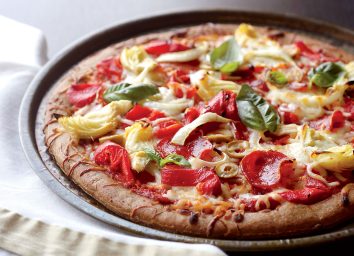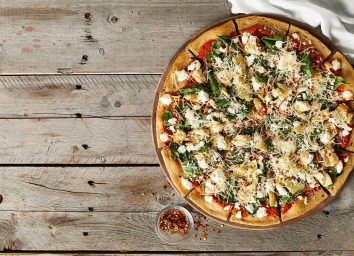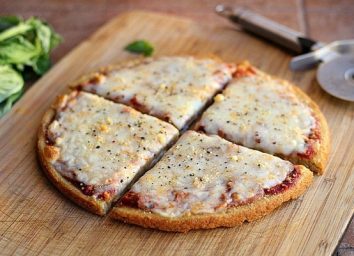20 Crucial Mistakes That Are Killing Your Homemade Pizza
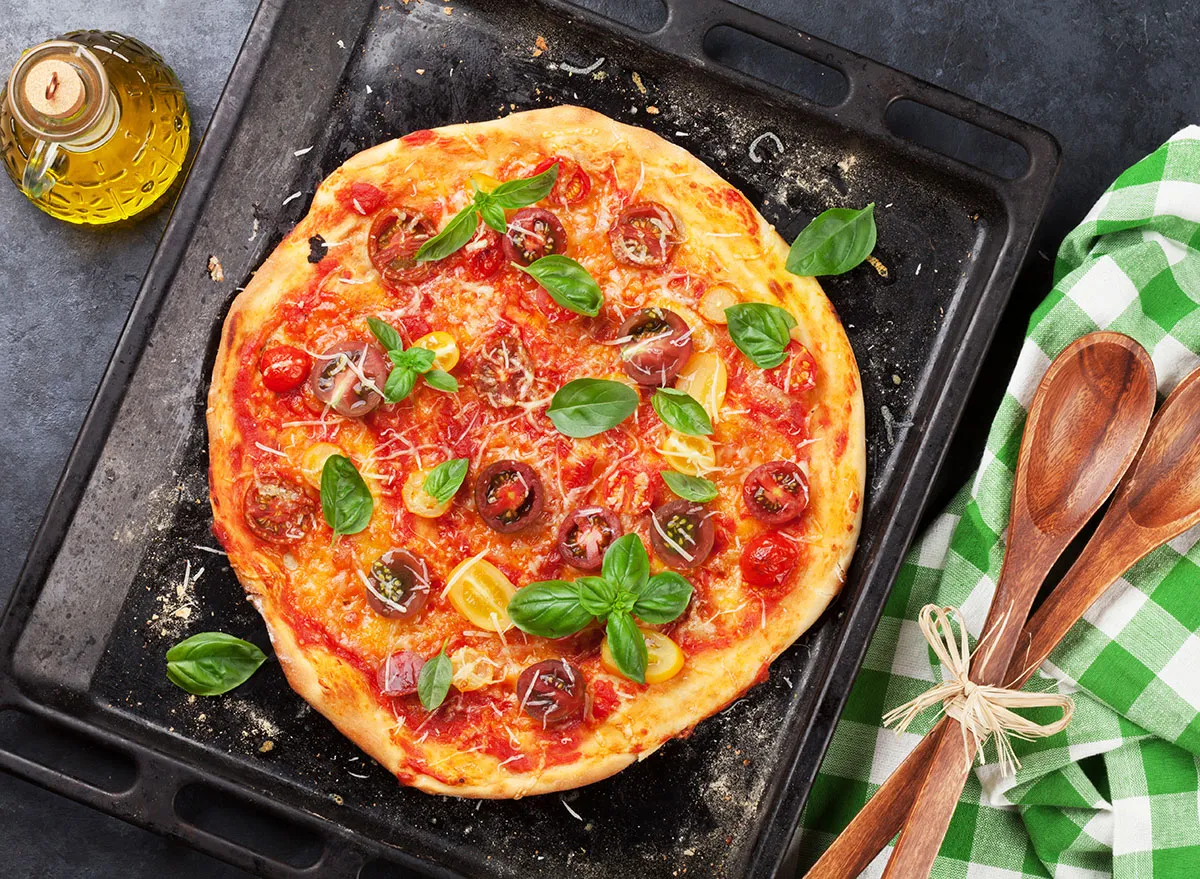
For all the pizza lovers out there, these tips are for you. It's time to take a break from ordering your pizza from your favorite pizza joint and try your hand at making it at home. It's not as difficult as you might think, as long as you're following a few key guidelines that some of the country's pizza experts have laid out for you, that is.
Pizza making is practically an art, so it will take some practice before you've made the perfect pizza. But if you follow these 20 tips when making pizza at home, you'll be baking up beautiful pies in no time.
Mistake: Using a rolling pin instead of tossing the dough
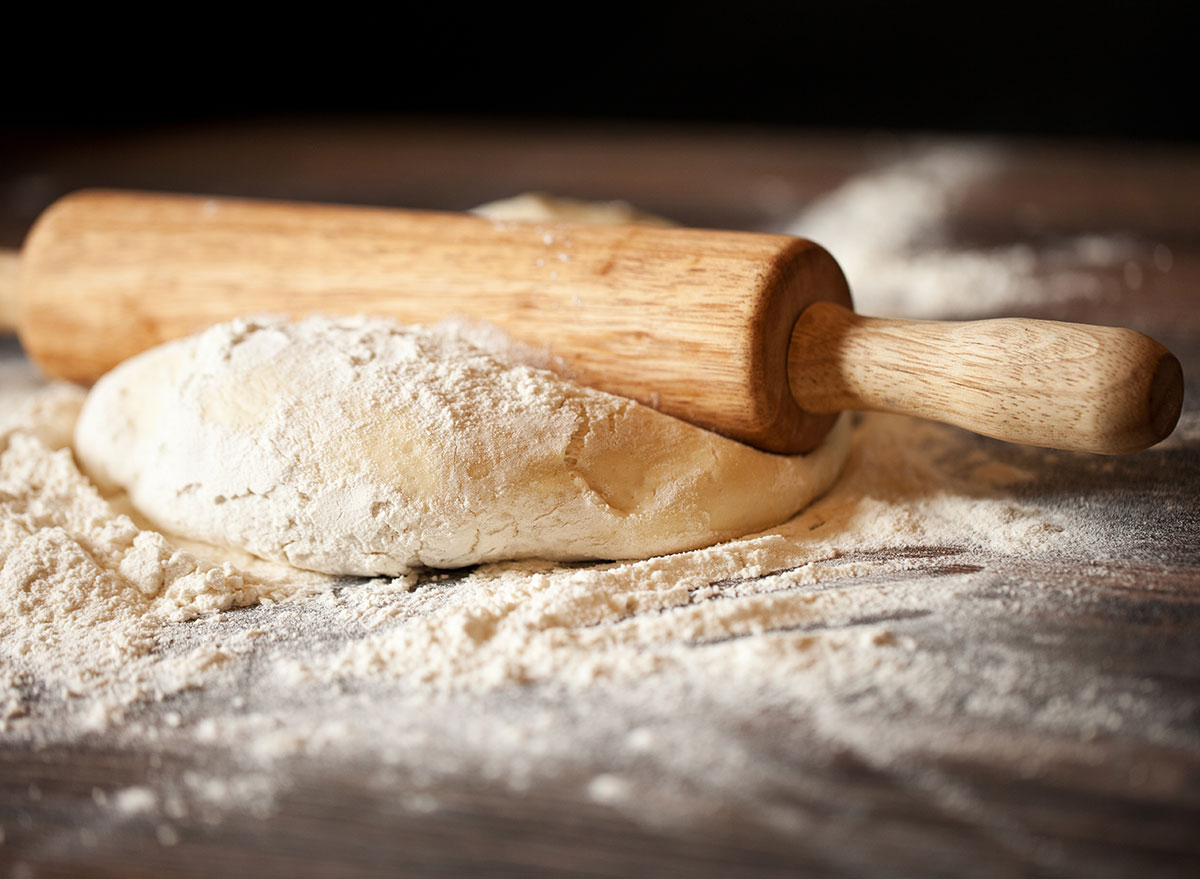
Los Angeles-based Chef Stephanie Harris-Uyidi cautions at-home bakers to never use a rolling pin. Making your pizza dough relies heavily on tossing the dough. "Rolling pins deflate the gas pockets of your pizza, getting rid of the soft, fluffy texture," she says.
How to fix it: Learn the art of the dough toss. It might take some practicing to get the technique down, but your pizza crust will turn out much better than if you didn't handle it gently in the first place.
Mistake: Using a pizza dough mix
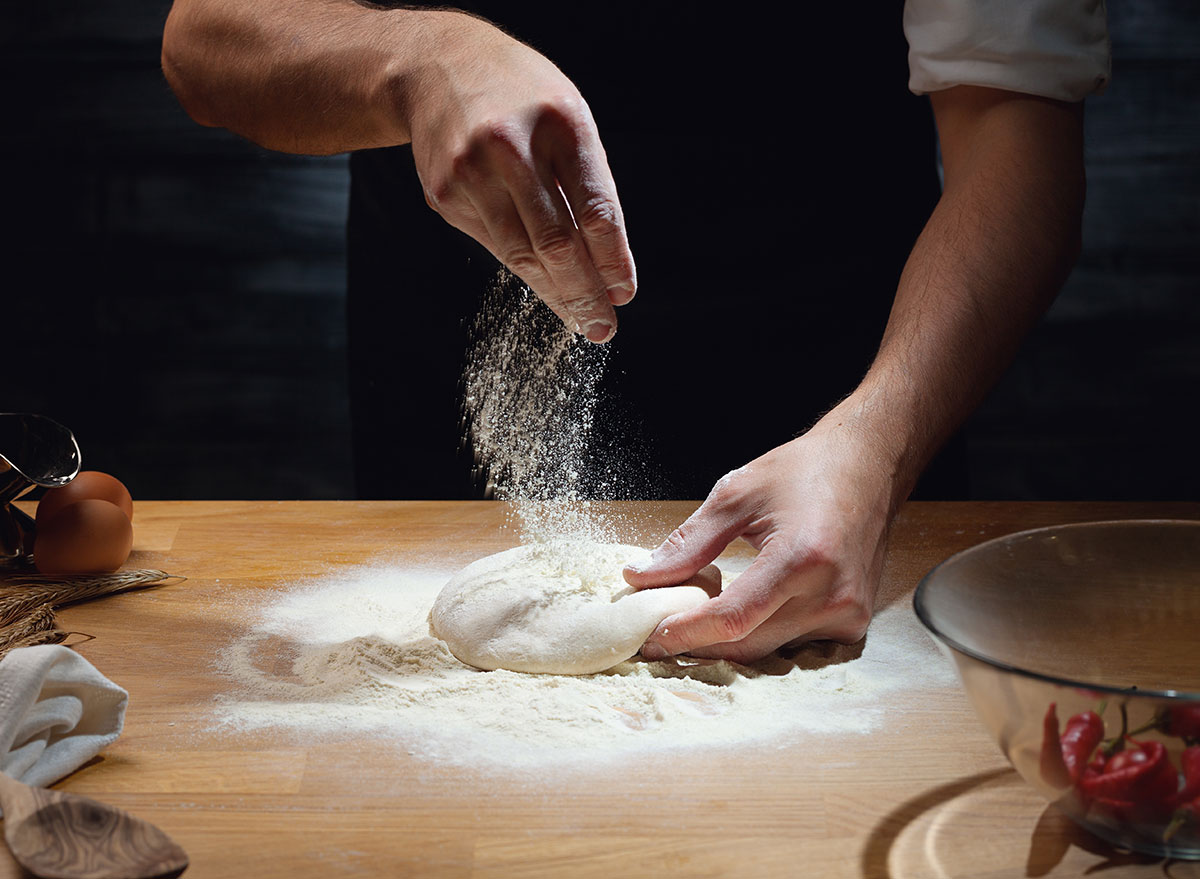
If you're going to the trouble of making a pizza at home, go ahead and make everything from scratch. "I'm a big believer in making your own pizza dough from scratch," says Alfie Szeprethy, Executive Chef for California's Sammy's Woodfired Pizza. "There are plenty of premade doughs out there, but making it on your own is pretty simple and requires very few steps: water, yeast, flour."
How to fix it: Find a dough recipe and go ahead and give it a try. It doesn't take much more effort than using a boxed mix, so why not go for it? While it may end up requiring a few more ingredients and a little extra time, the work will be worth it.
Mistake: Not choosing the best cheeses
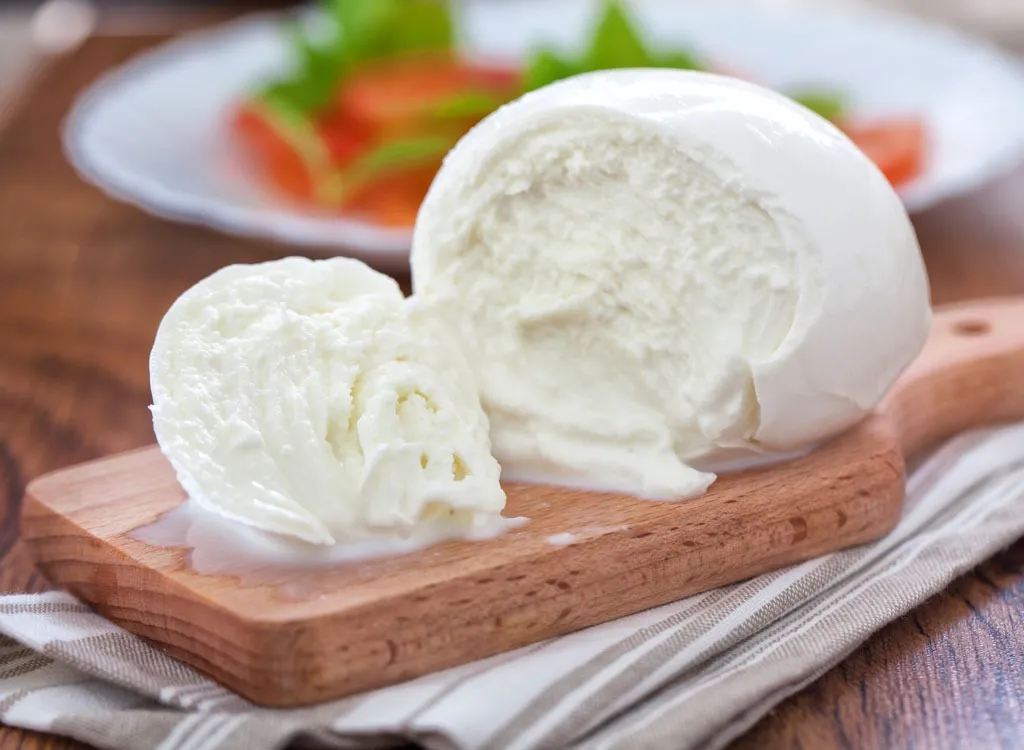
You can't just use any old cheese on your homemade pizza! Well, you can, but you'll be left with a very average pizza if you do. No cheeses are created equal, so obviously this can be left to your personal preferences. But Chef Giovanni Vittorio Tagliafierro, of New York's Tramonti Fifth Avenue, highly recommends you choose carefully.
How to fix it: Find the cheese you love. Chef Tagliafierro swears by Fior di latte mozzarella and Smoked Provola and will settle for nothing less. No shredded cheese from a bag here, please!
Mistake: Not having your toppings ready to go
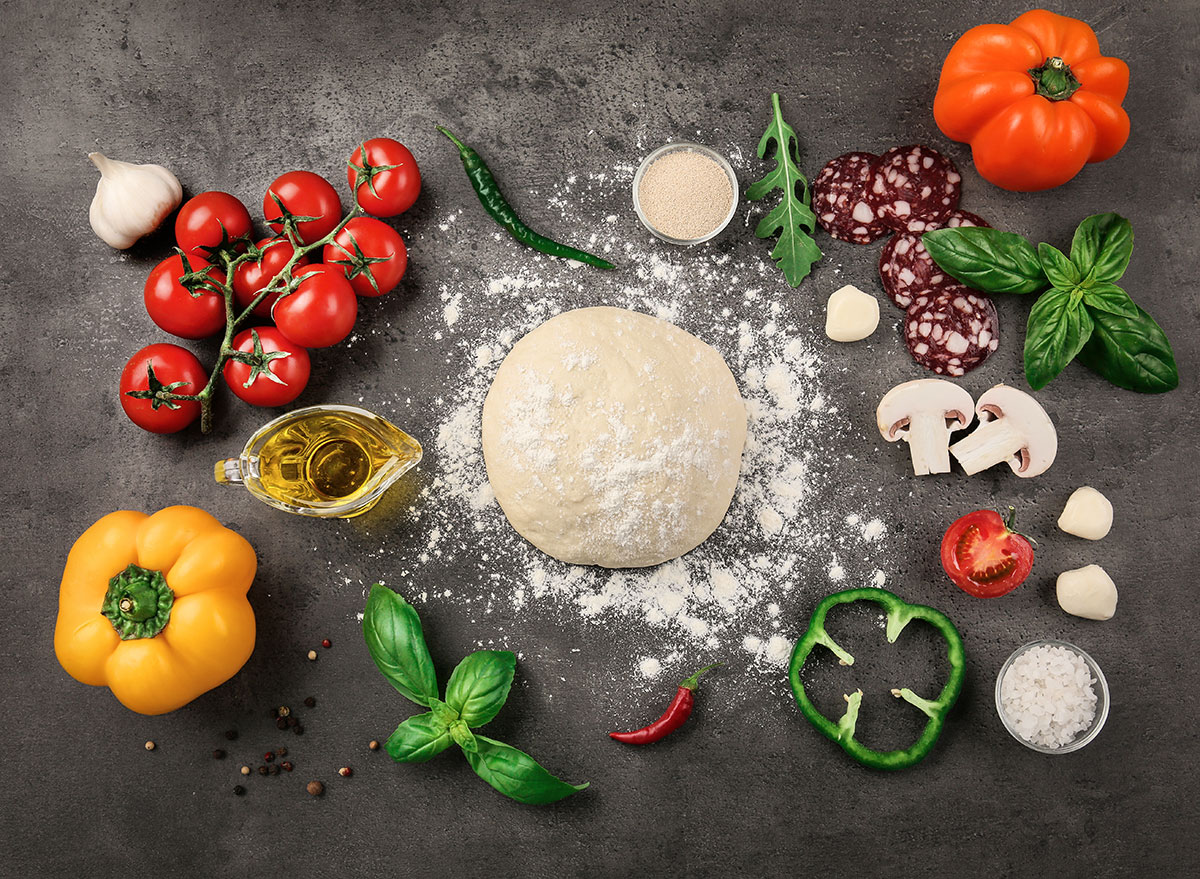
It's important to have everything ready to go right from the start. So that means prepping your oven, equipment, and toppings before you start the dough. Chef Matt Hyland of New York's Emmy Squared says this should all be handled before dealing with the dough. "Once the dough is stretched and sauced, moving fast will prevent the dough from sticking to the surface," he says.
How to fix it: Decide before you start what toppings you'll use. Once you've made the decision, get them all out and ready to go. Set them aside and make sure you have your oven set and any other equipment you'll need for putting the pizza together. At this point, you can start working on the dough.
Mistake: Putting too many toppings on
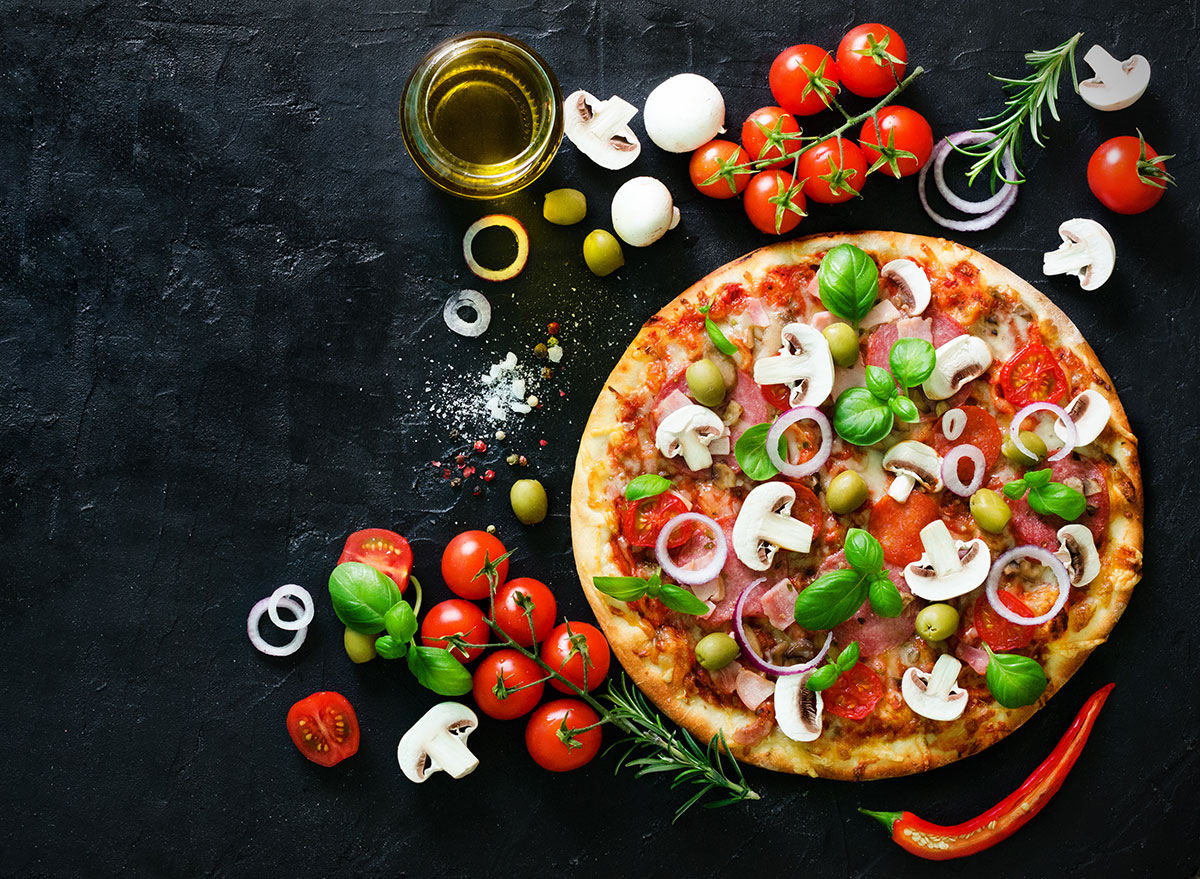
Of all the pizza chefs we spoke to, pretty much every single one mentioned this as a crucial mistake in at-home pizza baking. Never, ever overload the pizza with toppings. It'll weigh down your light and fluffy crust and keep it from baking properly. As Chef Hyland says, "Less is more."
How to fix it: Stick with two to three toppings (besides cheese) at the most and don't pile on a bunch of each of them. Each bite of the pizza should be a delicate balance of flavors, and if you've piled on the toppings, you won't get enough of the sauce and crust. If your heart is set on more toppings than that, then just make another pizza!
Mistake: Not using a pizza stone
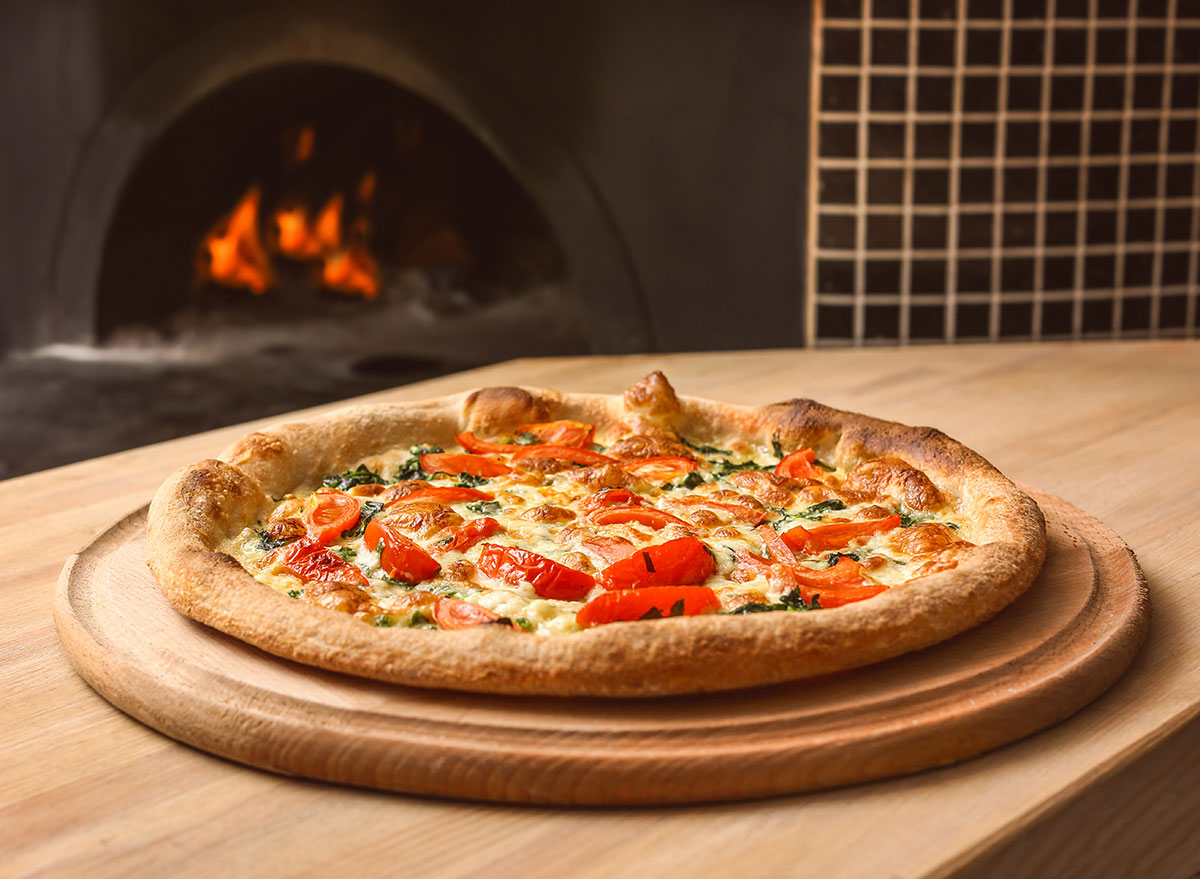
"People often forget that household ovens only reach 450 degrees, and good pizza really should be cooked at 700 degrees," Chef Szelprethy says. "For this reason, invest in a pizza stone." A cookie sheet won't do it, when it comes to pizza baking, because it won't get hot enough.
How to fix it: Always bake your pizza on a pizza stone. The stone will help your pizza get that crisp crust because the stone will get hotter than the oven itself. Understandably, you won't have a hot enough oven at home, but the stone will get you to the temperature you need.
David Ludwig, certified executive pastry chef and assistant director of the Hotel, Culinary Arts and Tourism Institute at Anne Arundel Community College, said he actually uses two pizza stones in the oven to create the brick oven environment pizza thrives in. He puts one over the pizza, too, to diffuse the heat and keep the toppings from burning while baking.
Mistake: Limiting yourself to marinara sauce
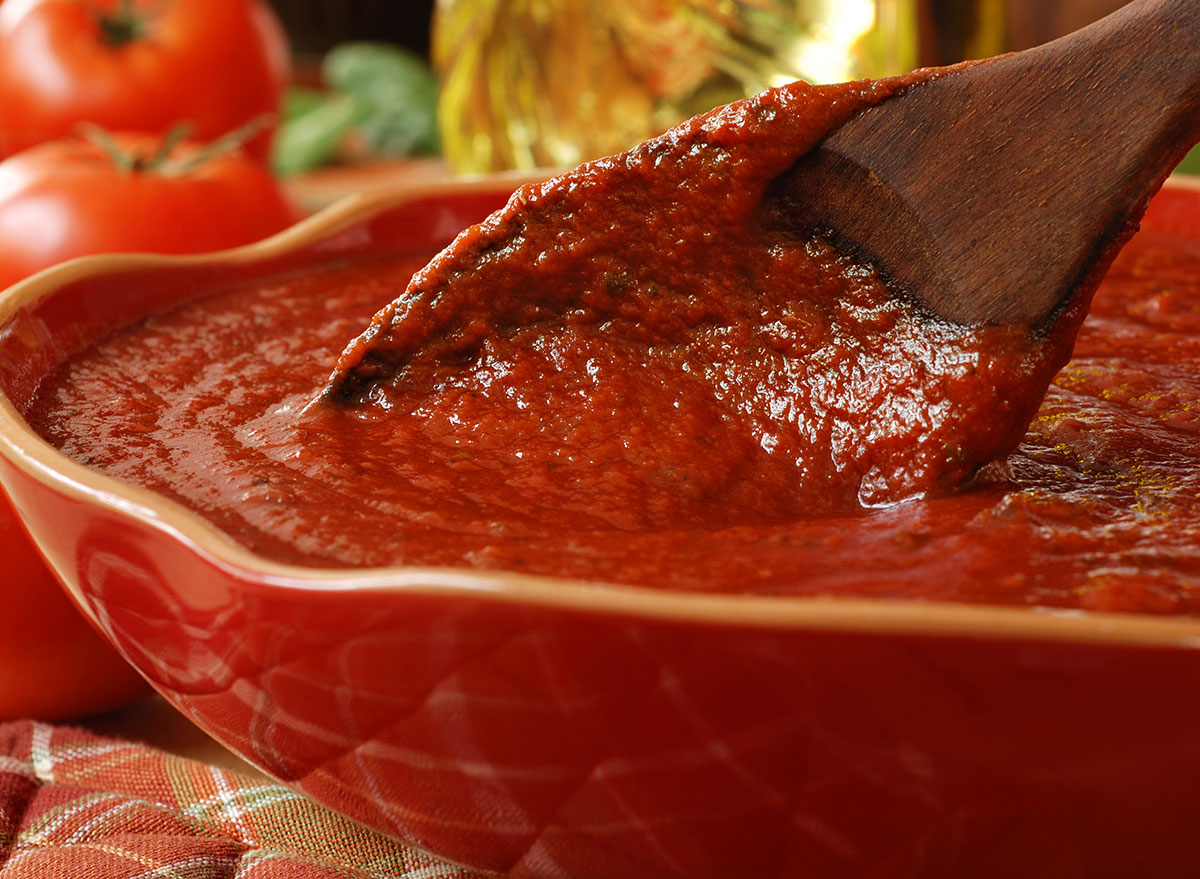
Guess what? You can use so many different sauces on your pizza! No one says you have to stay with the traditional flavors. Chef Harris-Uyidi says this is one thing she always recommends because it gives you so many more options of flavor combinations.
How to fix it: Try something different, like a pesto sauce or a garlic sauce. Or you can whip up a homemade sauce of your own based on whatever flavors you like.
Mistake: Not making sure the dough Is springy, elastic, and sticky
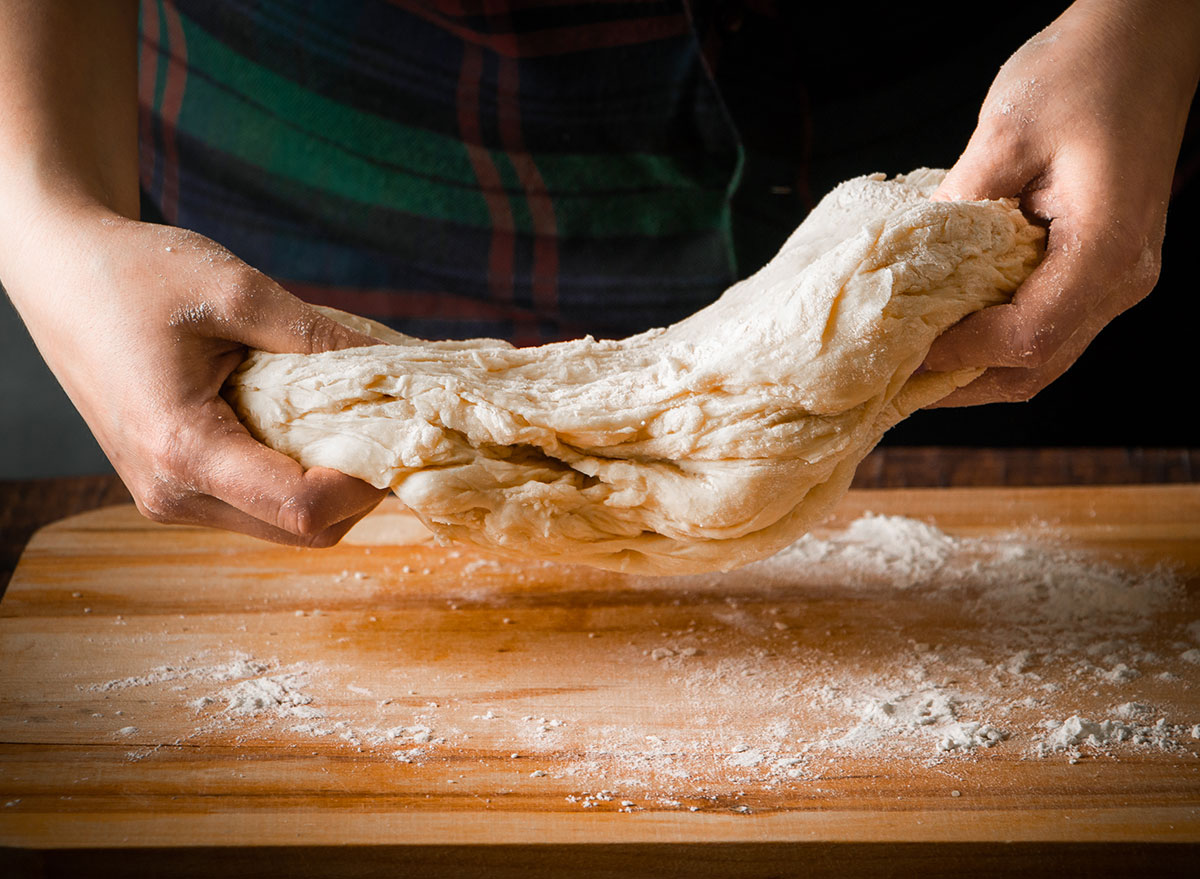
Chef Stephanie Harris-Uyidi used exactly those three descriptors when explaining what makes the perfect pizza dough. If your dough isn't these three things, it's not going to bake up into a fluffy yet crispy dough that'll properly hold your toppings. "The dough should clear the sides of the bowl but stick to the bottom of the bowl," she says.
How to fix it: Don't worry, this is easy to fix! If the dough is too wet and doesn't come off the sides of the bowl, just sprinkle in a little more flour. If it's a little on the dry side, add a teaspoon or two of cold water until you've got the right texture and consistency.
Mistake: Not letting the dough proof enough
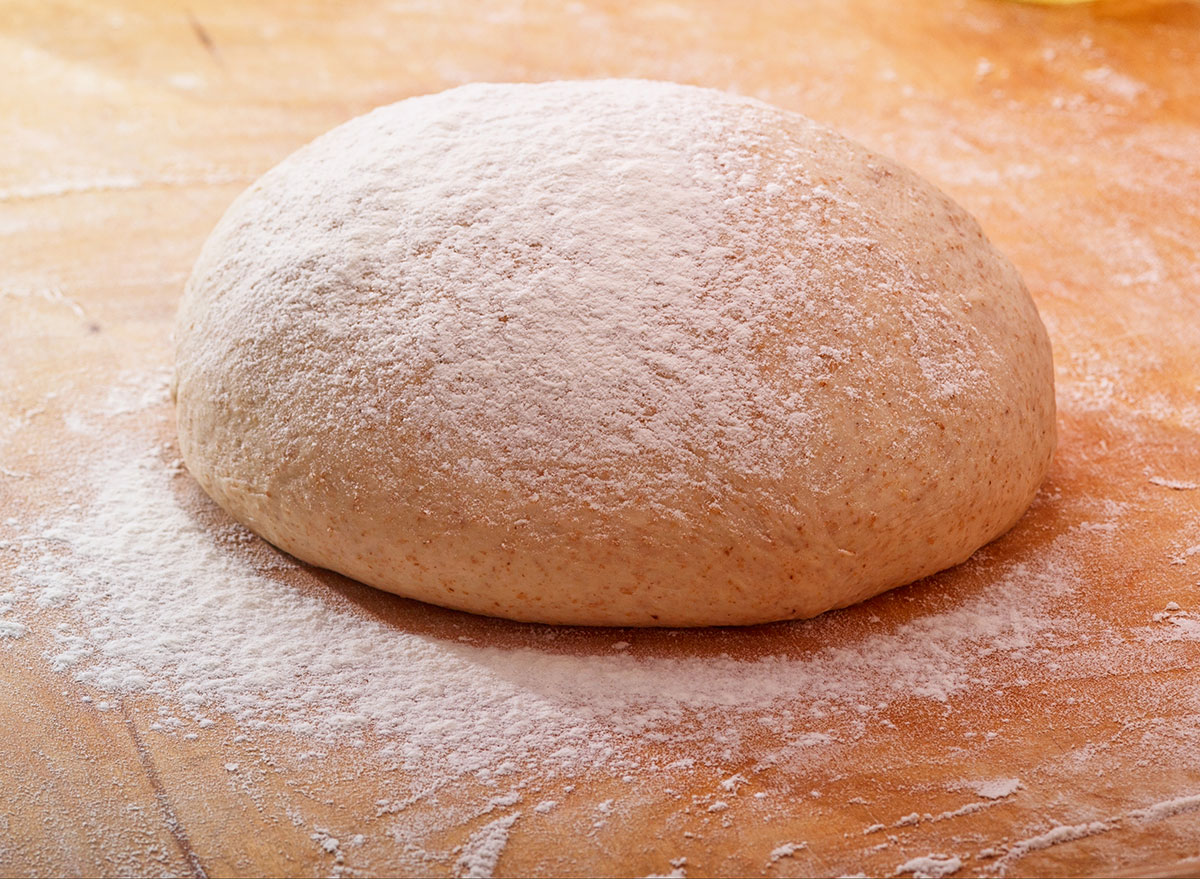
Making your pizza dough takes patience, and the dough has to be properly proofed. During the process, the yeast will do its job and make the dough rise. It will create air pockets in the dough that will give you a fluffy crust. Don't let your impatience get the best of you when it comes to putting in the time with the proofing process.
How to fix it: Denver's Hops & Pie owner and head chef Drew Watson recommends letting your dough sit out at room temperature for four hours prior to working with it. He said it will give you a "fluffy, yet crunchy in the right places pizza." Letting your dough go under-proofed will cause large air bubbles or make your dough extra flat.
Mistake: Overworking the dough
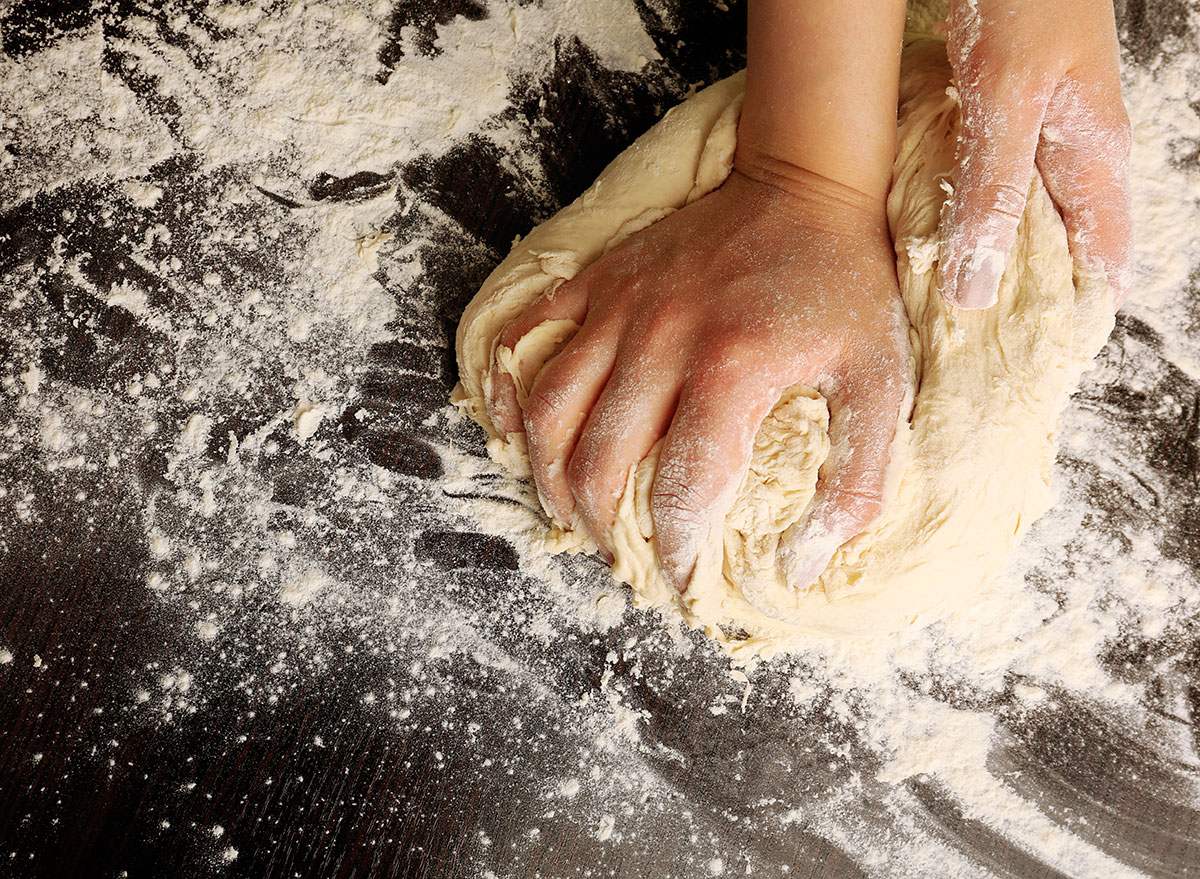
It may be tempting to keep playing with the pizza dough during the creation process, but don't do it! Continuing to mess with the dough will make the glutens in the flour build up, causing the dough to get tough when baked. So toss your pizza once and don't be tempted to keep messing with it.
How to fix it: You might lay out your pizza crust and be dissatisfied with the shape of it and be tempted to try again. Chef Drew Watson would advise you to just "cook off the ugly pizza and enjoy it." It doesn't matter what shape it is—if it tastes good, no one will care!
Mistake: Opening the oven to check the progress
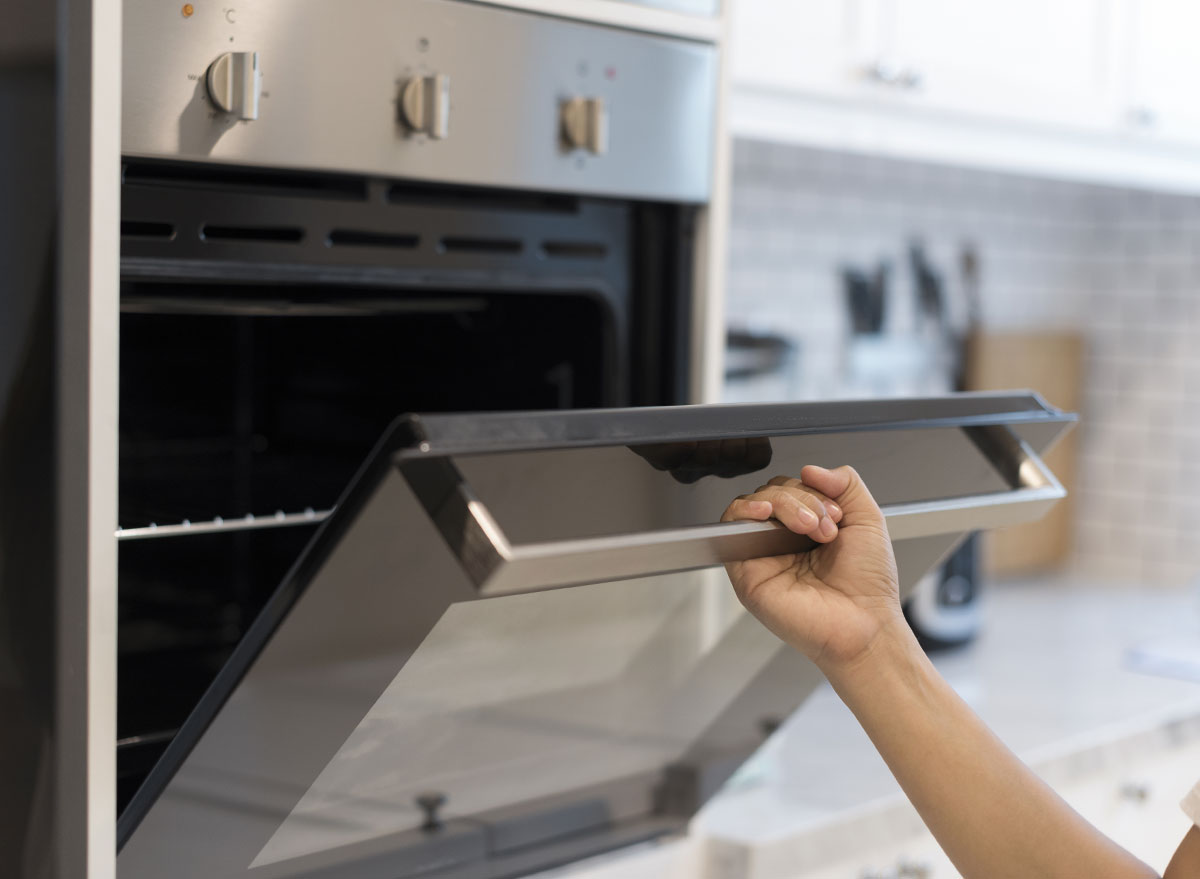
This tip goes for baking most things. Obviously, when you open the oven while it's doing its thing, you're going to let the heat out and the cold in, and it'll mess up the baking process. James Doxon, the executive chef at Vibe Concepts in Denver, says this is absolutely the case with pizza, even if you think it won't be. A rule of thumb to keep in mind is that every time you open the oven door, the oven loses 50 degrees, he explains. If you open it too many times, your pizza won't bake properly.
How to fix it: Set your timer on the pizza and walk away. It might be hard, but you have to. Once you've baked enough pizzas, you'll have the timing down to a science and won't have to worry about checking on it often, but until then, you'll have to just trust your timer, your oven, and your ingredients.
Mistake: Adding all the water to the dough at once
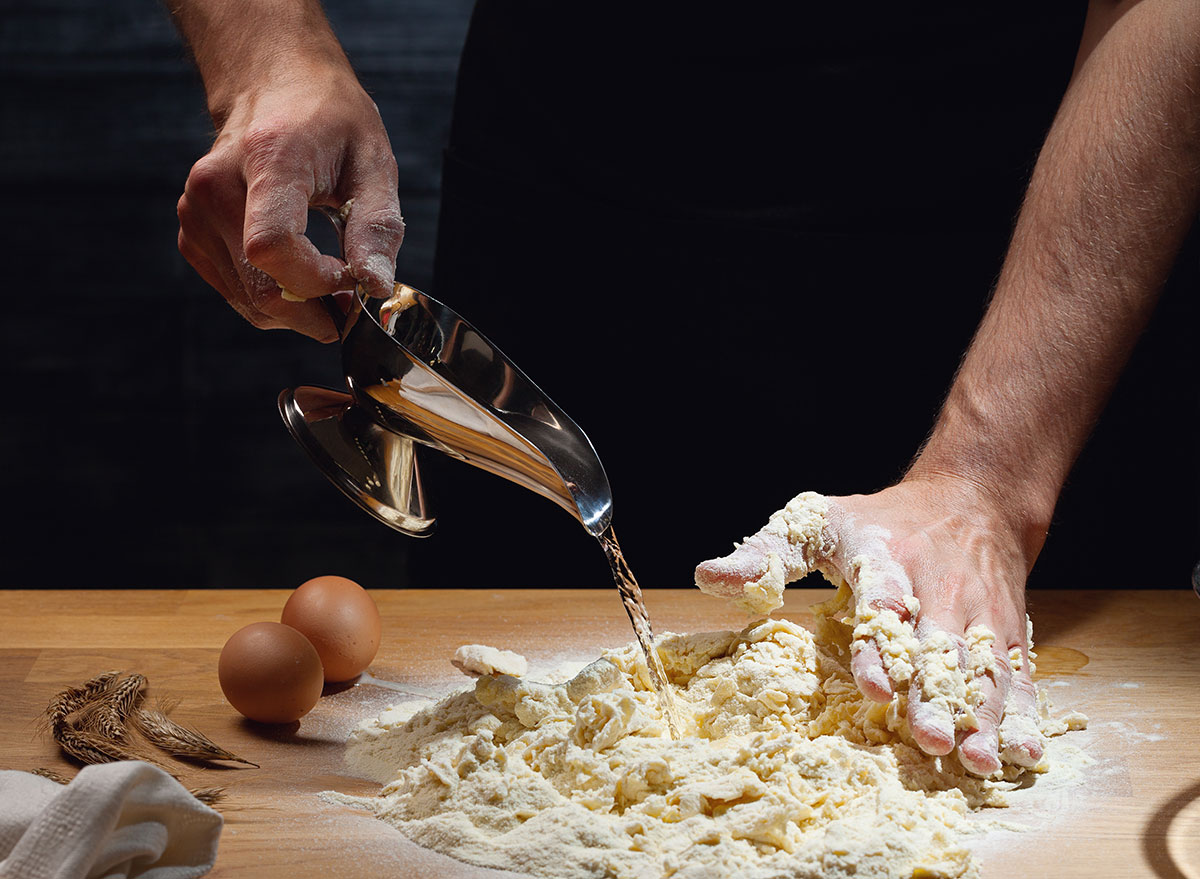
Whatever you do, don't measure your dough ingredients and throw them all into a bowl together at once and mix. Los Angeles-based executive chef Angelo Auriana says you have to add your water gradually. Incorporate it into the dry ingredients little by little.
How to fix it: Have your wet ingredients and dry ingredients separate and slowly add the water to the flour. This will ensure your dough comes to just the right consistency without getting too wet. If you add too much water, you have to counterbalance with dry ingredients, and if you keep messing with the ratios, the whole dough mixture will be off.
Mistake: Not preheating the oven
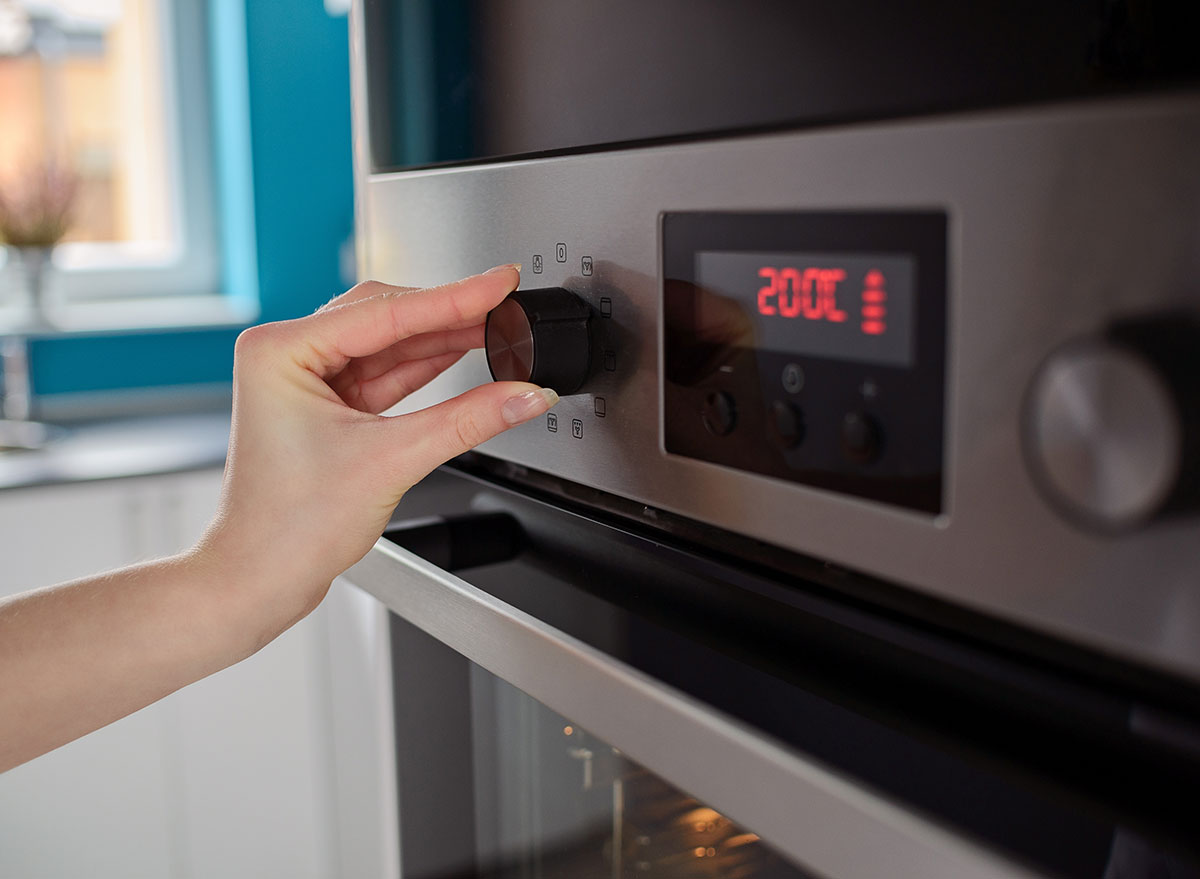
We know, preheating the oven can sometimes feel like it takes forever, but your oven has to be really hot to bake a pizza. Your oven actually probably has to be hotter than it can even go, but at the very least, it has to be up to the temperature you've set it before your pizza goes in.
How to fix it: Preheat your oven before you do anything. That should be the first step of this whole process after your dough is proofed and you're ready to actually put the pizza together. Preheat the oven, stretch out the proofed dough, top it, bake it. Done.
Mistake: Not parbaking the pizza
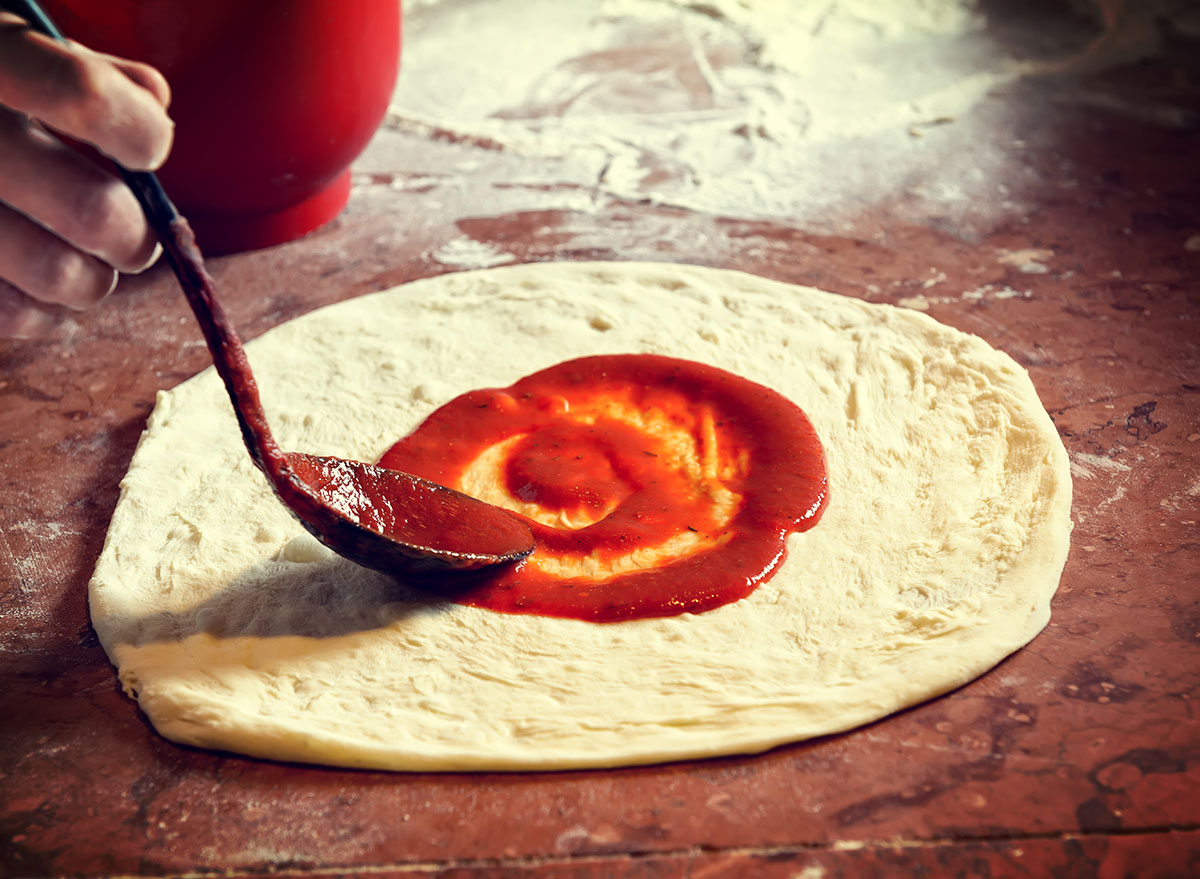
A few of the chefs had this advice because it's so hard to get the oven hot enough to properly bake a pizza, even with a pizza stone. Chef Auriana highly recommends parbaking the pizza crust so you can get the proper crisp on it without burning the toppings.
How to fix it: Set out the dough with the sauce on it on a pizza stone. Bake it halfway through the time and pull it out and top it. This way your dough will have enough time to bake but your cheese and vegetables won't get overdone.
Mistake: Undercooking the pizza
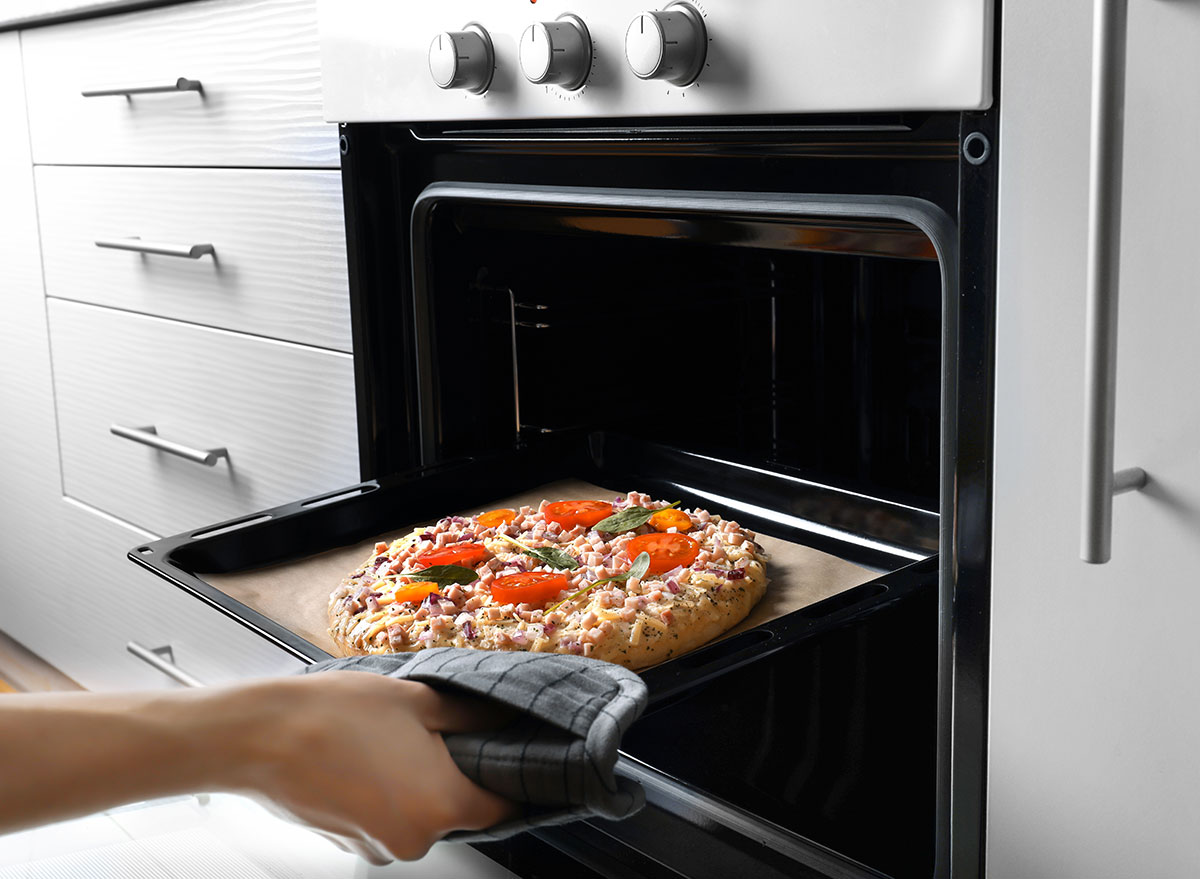
Anthony Spinato, head of Spinato's pizza, said that actually most people undercook their pizzas at home. "Think of it this way: When you're cooking on the stovetop and you sauté ingredients together, each individual ingredient perfectly blends together in perfect harmony to create an even better culmination of flavor. When you cook a pizza thoroughly, it has the same effect," Spinato says.
How to fix it: It might take a few tries to get the cooking time down, but once you've made a few pizzas, you'll know just how long to cook it to have the perfect flavor-melding combination. The crust has to be crisp on the outside and fluffy in the middle, which is where parbaking comes in handy so your toppings don't get overdone.
Mistake: Not using the right equipment
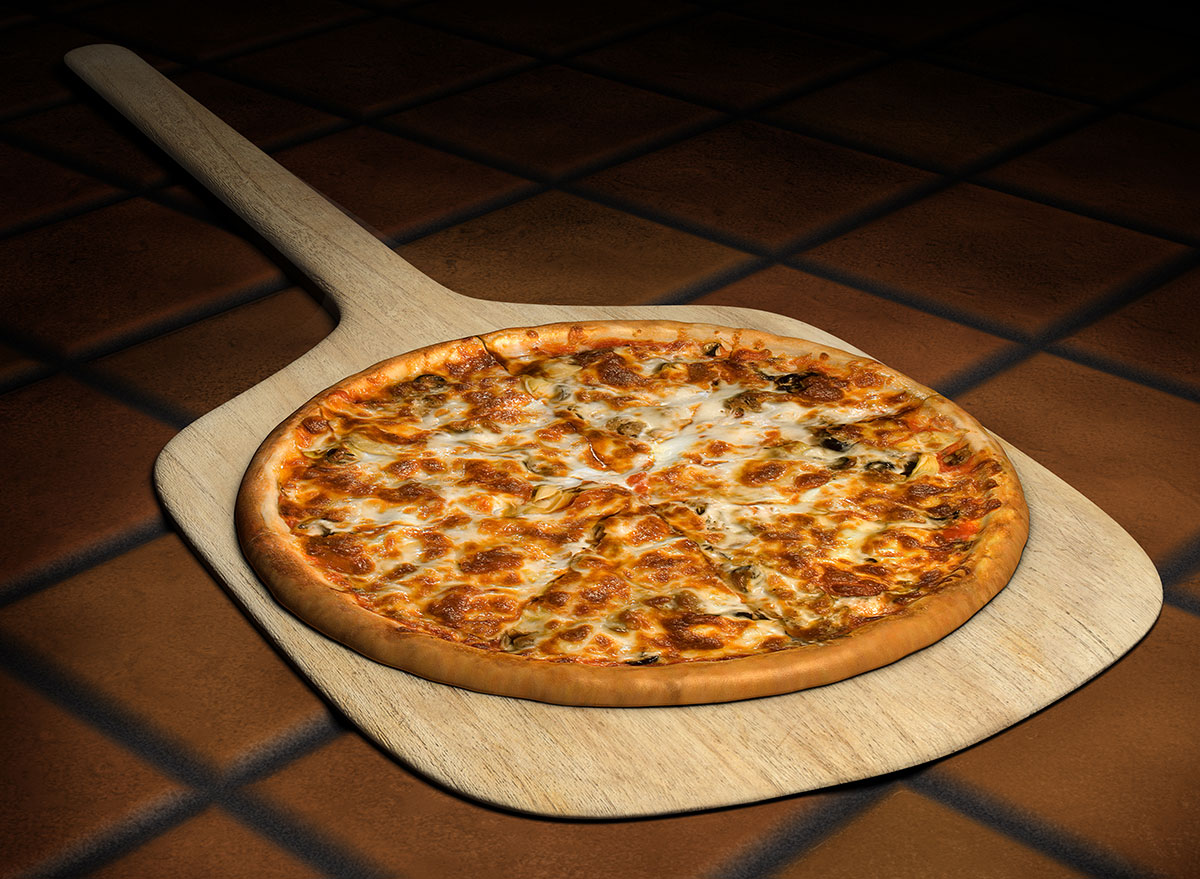
We already mentioned the pizza stone, but executive chef Myles McVay of Sauce in Detroit said he also swears by his wooden-handled pizza peel and a cooling rack. "The pizza peel will allow you more ease when loading and removing the pizza from the oven, and a cooling rack will give your pizza a little comfy home to rest before you can cut," he says. Three simple tools will make all the difference in your pie.
How to fix it: You probably already have a cooling rack at home, but a pizza stone is a great purchase if you plan to make pizza every so often. The wooden-handled pizza peel might feel extravagant, but if you really want to show off your pizza-baking skills, this is a must-have in your kitchen.
Mistake: Using the wrong flour
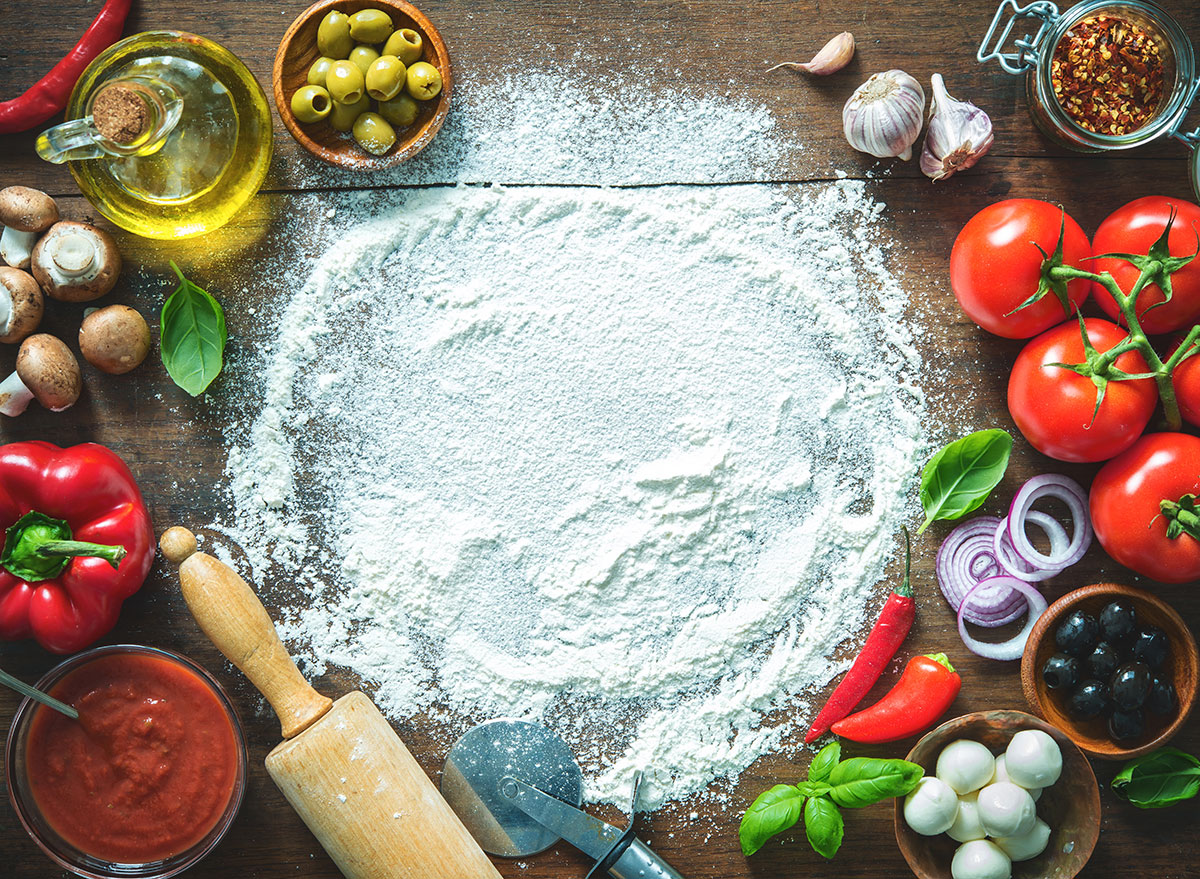
Multiple chefs also had this tip—make sure to use the proper flour when making your pizza dough. If you can, try to avoid using whatever you have in your kitchen, unless you've got the proper flour to make pizza dough. "A low-protein flour will create a lighter, airy, open crumb, while a high-protein flour will make the dough more dense," Chef McVay says. Different flours will be right for different pizza styles, so do your homework before purchasing the flour you think you need.
How to fix it: Use 00 flour for your dough if you're making a Neapolitan-style pizza. The 00 means that it's very finely ground, so it is low in proteins and high in glutens, giving you lighter pizza dough. This flour is often recommended in Italian recipes, so if you buy some for your pizza, you can use it again when you make Italian bread or pasta something else similar. Use bread flour if you're making a more New York-style pizza or Sicilian pizza.
Mistake: Using nonstick cooking spray

If you're about to make your pizza and you grabbed a can of nonstick cooking spray to spray your surface, stop immediately and put it down. The chef and owner of Tavola and Tavolino in New York, Nick Accardi, recommends never using a nonstick spray when making a pizza. "Good quality olive oil is best, as it does the same job and adds great flavor," he says.
How to fix it: You shouldn't need a nonstick cooking spray on your pizza stone for your dough in the first place, so don't use it. If you want a little bit of oil on the pizza crust before it bakes, though, this is where you should use your quality olive oil. Leave the nonstick spray in the cupboard for another day.
Mistake: Letting your dough get too warm while assembling
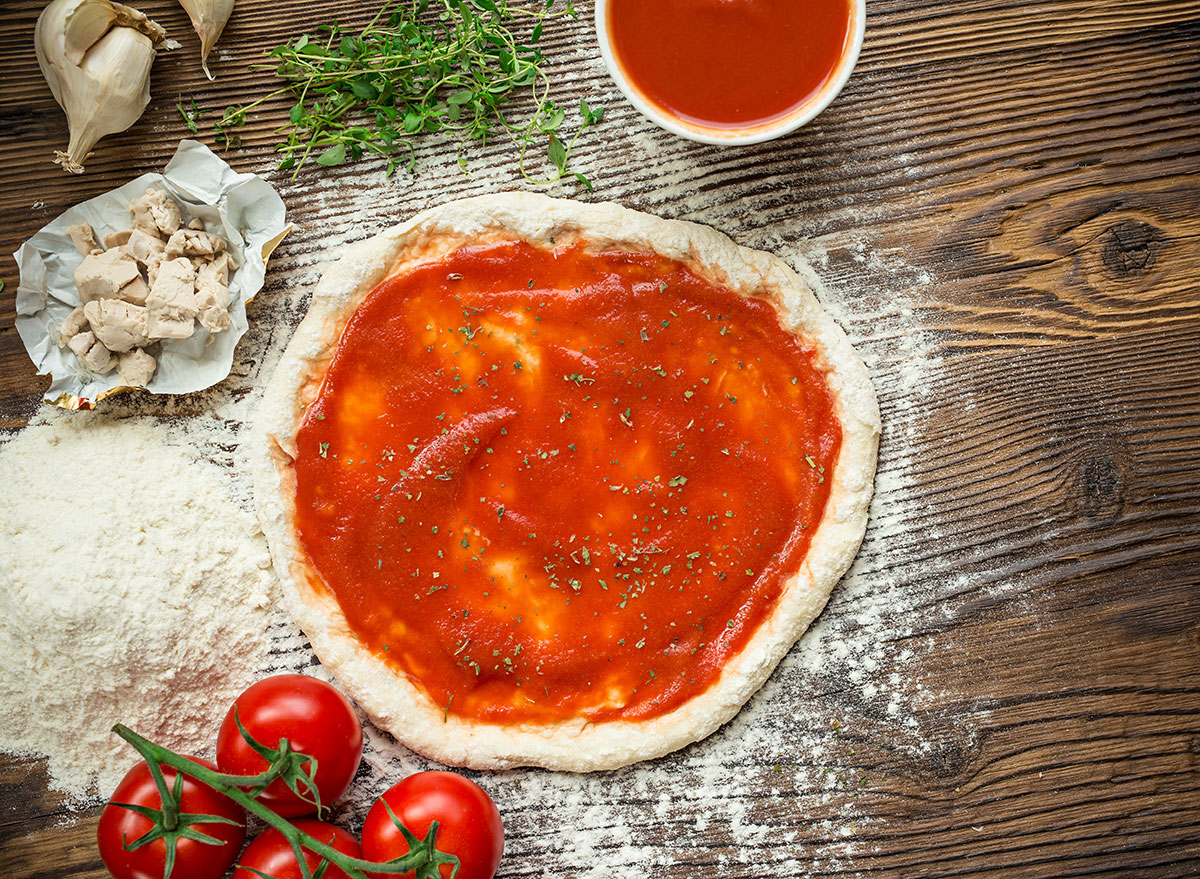
It's okay if you're not that quick with assembling your pizza the first few times you try—you'll get faster as you make more. But it's important to be aware of how warm your dough is getting while you're stretching it and adding the toppings. (This is also why it's smart to prep your toppings before you start working with your dough!)
How to fix it: Celebrity chef David Burke said it's too hard to maneuver the dough onto the pan if you let it get too warm, so make sure your dough is cool enough—room temperature should suffice —before you start working with it, and work with purpose. Get it stretched out quickly and efficiently and get it onto your pan or stone as soon as you can so you're not left with a sticky mess.
Mistake: Killing your yeast
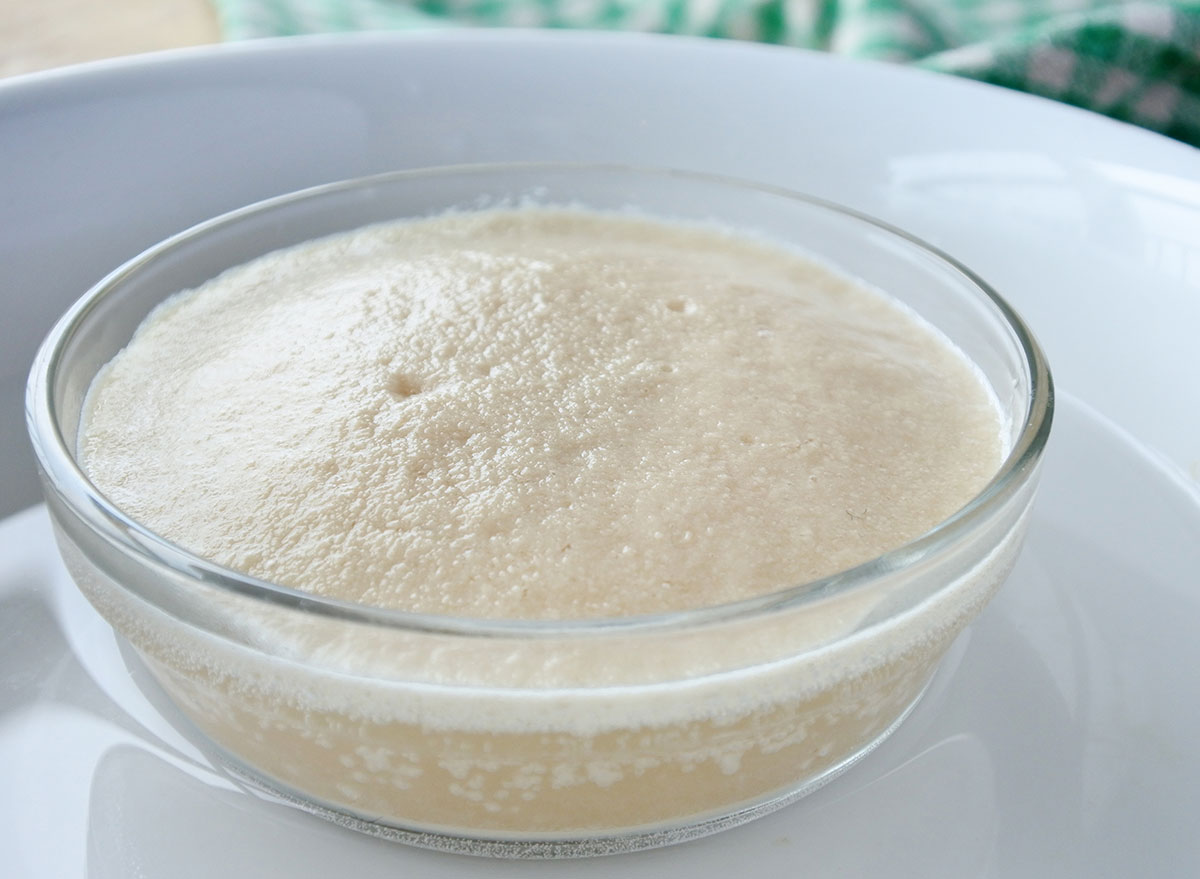
Be careful with the yeast when making the dough. If you've never dealt with yeast before, make sure you read the instructions on how to activate it. All it takes is a little bit of water and a little bit of patience and you're good to go. But Ruth Hartman, owner and chef of Coffee Creek Ranch in Trinity Center, California, says that it's easy to kill the yeast if your water is too hot.
How to fix it: Use room temperature water to activate your yeast. If the water is too hot, you'll kill the yeast and have to start over. As the yeast activates, it will foam and bubble. If the yeast is dead, it won't do these things, which is how you know you need to try again. Don't put dead yeast into your dough mixture, because then your dough won't rise, and your crust will be dense.
Now that you're armed with all these pizza-making tips, you'll never get stuck with a sad pie again.
